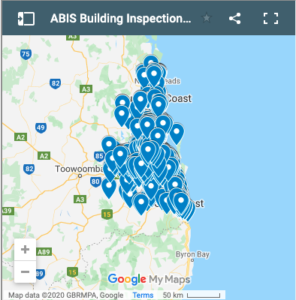For first time home-buyers, it is normal to feel overwhelmed by the whole experience of purchasing a property.
ABIS has listed out 8 steps that could assist you greatly in your journey to be a home-owner in Brisbane, Queensland.
Buying A Property in Brisbane
Step 1 – Determine Your Budget and Affordability
If you are feeling stressed out in your house-hunt, take a step back to reconsider your search criteria and re-evaluate your options. Determine what you can exactly afford, taking into accounts of any potential extra and hidden cost. Find out how much you can borrow, add this to your deposit, and get an estimate of what the add-on costs will be including loan costs and stamp duty on the loan, stamp duty on the property, moving costs, building and pest inspection, installing electricity, gas, internet, and more.
Step 2 – Feel the Area
Research the areas where you want to live, attend open houses and auctions to get a feel for property prices in the location. Have a drive around the suburbs and if possible, get local insights by talking to some neighbours or people who have lived in that particular suburb.
Step 3 – Reconfirm House Upgrades
Once you have decided on a house, confirm which fixtures and fittings are included in the sale – dishwashers, outdoor pots, verandah, kitchen tops, etc. Always double check with the owner or the property agent so that both parties are on the same page.
Step 4 – Make An Offer
Make an offer on the property. Usually, the property agent will ask you for a written offer prior to taking it to the owner, however, the negotiation back-and-forth after that is often verbal with signatures following up once everything is confirmed. You will need to supply a small deposit, with the full deposit handed to the estate agent within 7 days. You then need to complete a Disclose to Buyer and Contract of Sale listing the fixtures and any special conditions such as:
- Subject to building and pest inspection
- Subject to finance
- Subject to sale of an existing property
(Note: these special conditions serve to help you cancel the contract if you find you cannot go ahead due to issues found through the Building and Pest Inspection, or if your bank won’t approve the finance for some reason).
Step 5 – Post Contract-of-Sale
As soon as your Contract of Sale has been accepted and dated you should:
- Apply for your loan
- Order a Building and Pest Inspection
- Find a conveyancer to handle the paperwork and government searches
- Organise insurance on your new home (once the contract is unconditional, you are responsible for it).
Step 6 – Property Transfer
Your conveyancer will complete transfer documents which verify that the property is to be transferred from the seller’s name into your name. You will need to pay the Stamp Duty Transfer to your solicitor who will submit it to the appropriate authorities.
Step 7 – Property Settlement
The settlement is then handled by your conveyancer and your bank where the balance of monies is handed over on the settlement date nominated in the Contract of Sale (this date can be varied by mutual consent from both sides if something happens to hold up the sale). The property should be handed over in the same condition as it was on the day of the inspection, and you are entitled to have a building inspection done again just to make sure.
Step 8 – Get the Keys!
You and the real estate agent will be advised once the settlement is complete, then you will be able to pick up the keys. Now you can move in and celebrate your new home!




